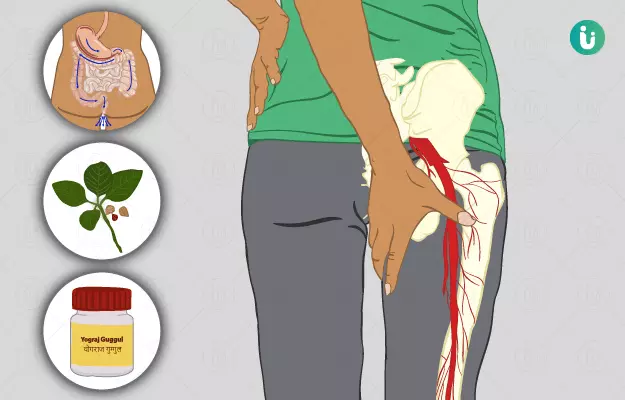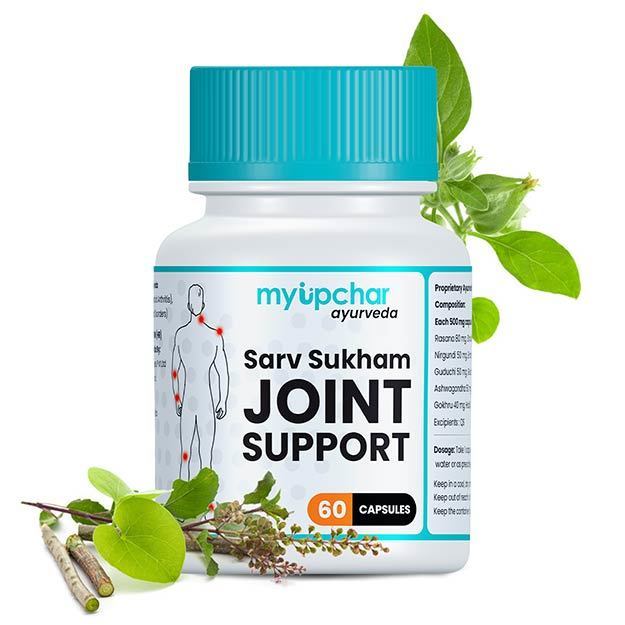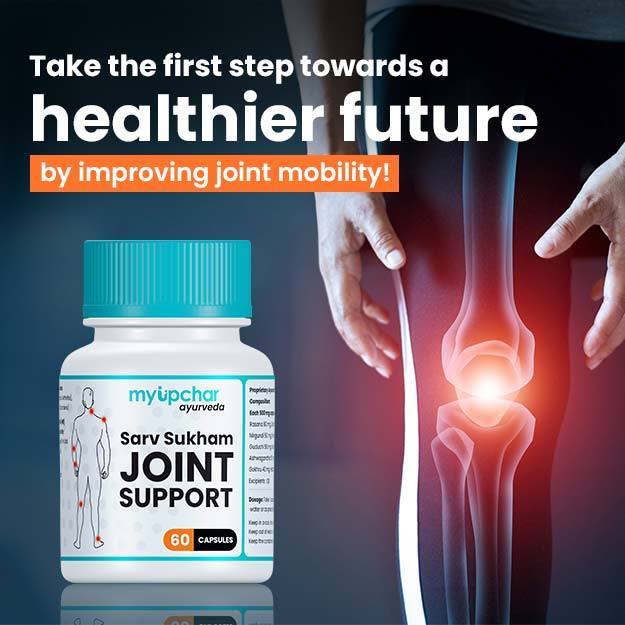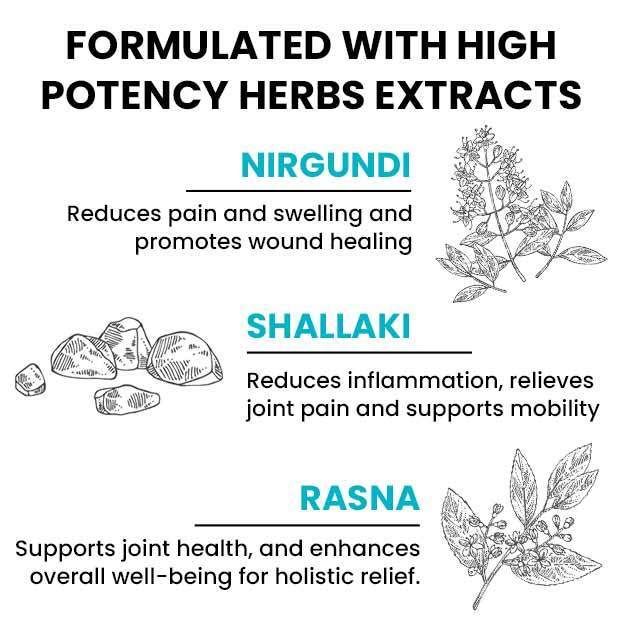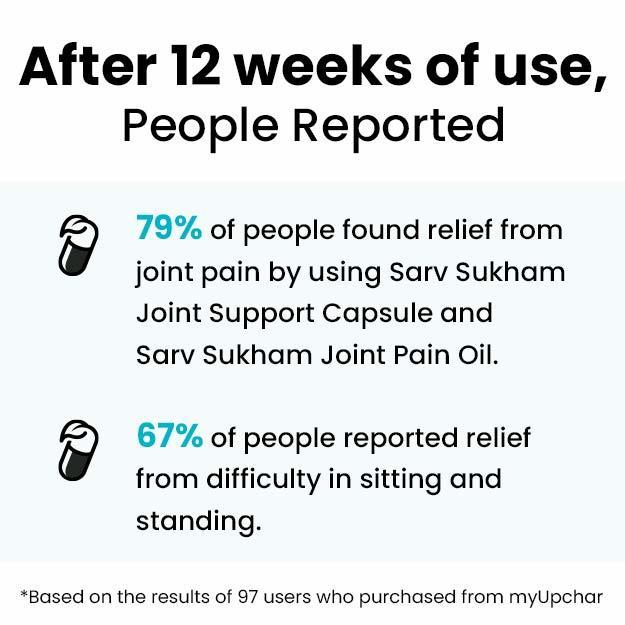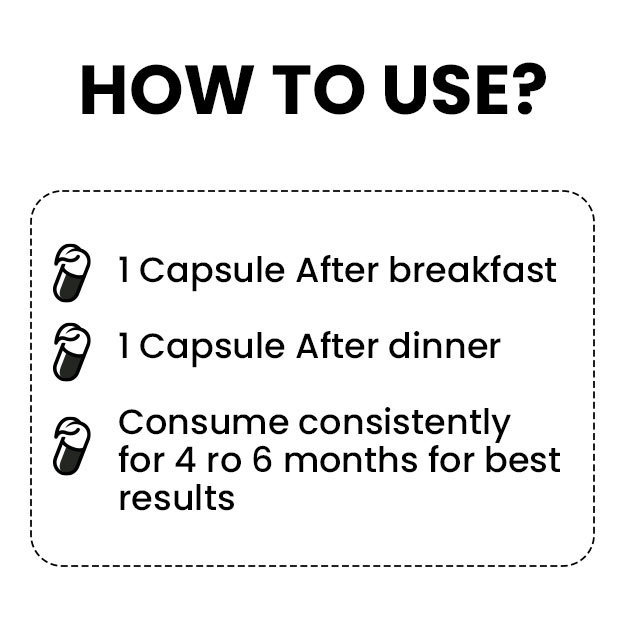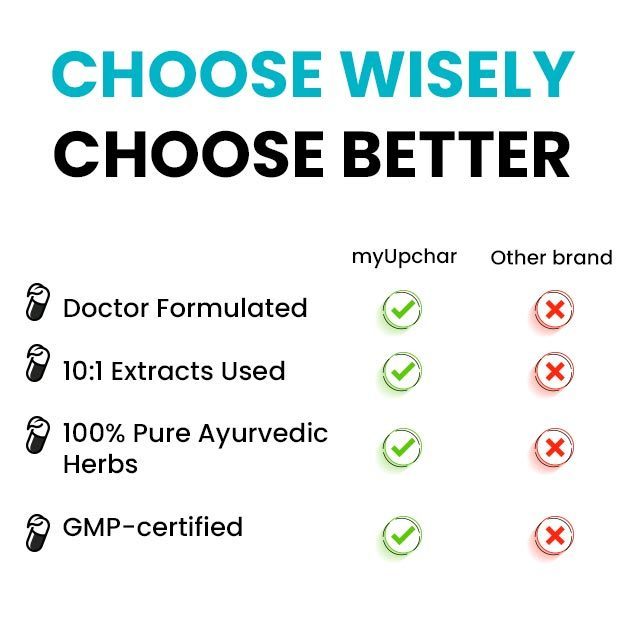Sciatica is a condition that primarily affects the lower back, causing a shooting, severe and sharp pain, which radiates to the hip, buttock, back of the thigh and inside of the leg on one side or on both sides. Weakness, numbness and sensitivity to touch can also accompany this pain, which makes it difficult to raise the affected leg. Compression of or inflammation in the sciatic nerve is the primary cause for sciatica; however, there are other causes of sciatica as well. The Ayurvedic term for sciatica is gridhrasi. It is included under the group of vatavyadhi, diseases caused due to the aggravation of vata. Vitiation in vata levels causes pain in the kandara (tendon) and snayu (muscle) of the lower limbs, which progresses to conditions like sciatica. True sciatica occurs in about 5% of the people who experience back pain.
Ayurveda uses nidana parivarjana (avoiding the causes) as the first line of treatment for gridhrasi. Shamana (pacification) and shodhana (purification) therapies such as panchakarma (five therapies), external application of medicines and massages are used to provide relief from sciatica. Herbs like shunthi (dried ginger), ashwagandha (Indian ginseng) and rasna (Indian camphorweed) with Ayurvedic formulations of dhanwantaram kwatha, sahacharadi kashaya and maharasnadi kashaya have shown beneficial effects in people with sciatica.
- Ayurvedic view of sciatica
- Ayurvedic treatment for sciatica
- Ayurvedic herbs and medicines for sciatica
- Dietary and lifestyle changes for sciatica patient as per ayurveda
- How effective are ayurvedic medicines and treatments for sciatica
- Side effects and risks of ayurvedic medicine and treatments for sciatica
- Takeaway
Ayurvedic view of sciatica
According to Ayurveda, factors like toda (pricking pain), stambha (stiffness), spandana (tingling sensation) and ruk (pain) in the calf muscles, lower back, upper back, knee joints and in either of the lower limbs can be symptoms of sciatica. Sciatica can be caused due to vitiation of the vata alone or both the kapha and vata together. Sciatica caused due to the vitiation of kapha-vata is associated with additional symptoms of gaurava (heaviness), tandra (drowsiness) and aruchi (loss of taste).
Therapies such as swedana (sudation or sweat therapy), pindasweda (fomentation) along with consumption of pachaka (digestives) improve the digestive function and bala (strength) and restore agni (fire) in the body. It also helps to pacify the aggravated doshas in the body. Basti karma (enemas) under shodhana therapy using decoctions like eranda mooladi (castor roots and other herbs) help to get rid of the excess vata in the body through faeces.
Sitting in a proper position, sitting on comfortable seats, avoiding the suppression of natural urges such as bowel and bladder movement, and including foods like shigru (drumsticks), mamsarasa (meat broth), brinjal and methi (fenugreek) in the daily diet can help manage sciatica.
Ayurvedic treatment for sciatica
- Nidana parivarjana
- Nidana parivarjana therapy aims at avoiding the causative factors of disease. Avoiding nidanas (causes) of diseases by practising langhana (fasting), alpashana (eating a limited quantity of food) and ruksha annapana sevana (consuming foods with drying properties) help maintain a healthy lifestyle, thereby, preventing diseases.
- Since sciatica is caused due to aggravated vata, avoiding vatika annapana (a diet that aggravates vata) is beneficial in people with sciatica. This can help prevent a vatavyadhi like sciatica.
- Nidana parivarjana has dual benefits in treating a disease- it halts the progression of a disease and prevents recurrence.
- Swedana
- Swedana therapy can be used for pacifying doshas as well as in the pre-treatment during panchakarma treatment. It widens the circulatory channels in the body and improves blood circulation. By liquefication of toxins, swedana makes it easier to throw them out of the body. This process also brings back the balance of vata and kapha in the body. Swedana is known to be the best therapy for vata-related disorders.
- Tapa (fomentation) and ushma (vapour) swedana using herbal steam, churna (powder) or leaves helps provide relief from muscle spasms and constant pain.
- Churnapinda sweda using kolakulathadi yoga is used in people with sciatica caused due to vitiation of vata levels only. It is mainly used in the early stages of gridhrasi. Patra pinda sweda using herbal leaves that alleviate the symptoms of aggravated vata is performed after churnapinda sweda.
- Pinda sweda using citrus fruits and turmeric is performed to reduce oedema. A milk decoction of bala (country mallow) and shashtika rice is used in the later stages of gridhrasi.
- Abhyanga (massage) is performed along with swedana using mahanarayana taila, sahacharadi taila, bala taila, karpasasthaydi taila, prasaranyadi taila and other herbal oils.
- Virechana (purgation)
- Virechana method includes induction of purgation in individuals using Ayurvedic herbs. The herbs draw out ama (toxins) from the blood and help provide relief from many conditions including jaundice, kidney stones and ulcers.
- Virechana is performed with eranda taila (either plain or processed), abhayadi modaka, ichhabhedi rasa and trivita lehya in people diagnosed with sciatica.
- Nirgundi (five-leaved chaste tree) swarasa (juice) is mixed with eranda taila to achieve better results.
- Basti
- Basti is used in Ayurveda specifically to get rid of excess vata and other predominant doshas in the body. It improves colon function and draws out ama from the body, especially from the digestive system.
- Basti helps in achieving relief from lower back pain and is useful in treating many conditions including gout, chronic constipation, arthritis and sciatica.
- Kati basti is found to be beneficial in people with sciatica. In the kati basti procedure, warm herbal oils are poured on the lumbosacral region for about 45 minutes. Murivenna taila, mahanarayana taila and dhanwantaram taila are very useful in providing relief from severe pain experienced by people with sciatica.
- Nirooha basti using erandamooladi and madhutailika and anuvasana basti using dhanwantaram taila and sahacharadi taila are performed when initial vitiation of vata is detected in people with gridhrasi.
- Agni karma (thermal cauterisation)
- Agni karma helps treat diseases caused due to vata, such as sciatica. This procedure is performed using the cauterisation (burning a part of the body) process. It is said to be the best treatment for relieving pain and preventing relapse of the condition.
Ayurvedic herbs and medicines for sciatica
Ayurvedic Herbs for Sciatica
- Ashwagandha
- Ashwagandha is used as a tonic and immune-boosting herb in Ayurveda. It has sedative (induces sleepiness), aphrodisiac (increases libido) and astringent (constricts body tissues) properties.
- Ashwagandha promotes quick healing of tissues and is used to provide relief from many health conditions including fatigue, cough, memory loss, skin conditions and swelling.
- The anti-inflammatory properties of ashwagandha make it useful in reducing pain and swelling in people with sciatica.
- Ashwagandha is available in forms such as decoctions and powder. You can take ashwagandha churna with lukewarm water or as per your physician’s directions.
Enhance stress relief and vitality with our Ashwagandha blend. Elevate your mood and intimacy. On sale now for a healthier lifestyle.
Urjas Ashwagandha Tablet by myUpchar Ayurveda
- Shunthi
- Shunthi mainly acts on the respiratory and digestive systems. When taken with honey, it reduces kapha in the body. The aromatic, carminative (reduces flatulance), antiemetic (prevents vomiting), digestive and nervine (calms nerves) properties of shunthi make it useful in treating many conditions including sore throat, fevers, cough and stomach pain.
- The analgesic properties of shunthi reduce pain in people diagnosed with sciatica. It also helps relieve indigestion, hoarseness, diarrhoea and improves appetite. Shunthi, when taken along with asafoetida provides relief from rheumatic pain.
- It is available in the form of fresh juice, pills, paste, infusions and decoctions. You can take shunthi churna with lukewarm water or as per physician’s directions.
- Rasna
- Rasna improves gurutva (heaviness) and usma (heat) in the body and is tikta (bitter) in taste.
- It is used to treat fever, osteoarthritis, shvasa (asthma), sidhma (white spots) and cough. Being helpful in the treatment of vatavyadhis; it is an excellent choice of herb for sciatica.
- You can take rasna churna with lukewarm water or as per the physician’s directions.
Ayurvedic Medicines for Sciatica
- Sahacharadi kashaya
- Sahacharadi kashaya is a decoction prepared from four ingredients: bala, shunthi, sahchara (pale-rose flowered) and devadaru (Himalayan cedar).
- This medicine is used to treat rheumatic conditions, lethargy and varicosity. Sahachara has anti-diabetic properties. It also pacifies kapha and vata, thus, making it useful in the treatment of sciatica.
- You can take sahacharadi kashaya with lukewarm water or as per your physician’s direction.
- Maharasnadi kashaya
- Maharasnadi kashaya is a herbal formulation made of 26 ingredients including guduchi (heart-leaved moonseed), aragvadha (golden shower), ashwagandha, eranda, bala and gokshura (small caltrops).
- This medicine is useful in treating many conditions that are caused due to the aggravation of vata including paralysis, hernia, brachial palsy, and rheumatic diseases. Since sciatica is caused due to vata aggrevation, it is effective in treating sciatica as well.
- You can take maharasnadi kashaya with lukewarm water or as per your physician’s direction.
- Dhanwantaram kwatha
- Dhanwantaram kwatha is a decoction prepared using 44 herbs including yashtimadhu (mulethi), shatavari (hundred roots), punarnava (red hogweed), manjishtha (Indian madder), triphala (a combination of amalaki [Indian gooseberry], vibhitaki [belleric myrobalan], and haritaki [chebulic myrobalan]) and devadaru.
- It is typically recommended in those who have undergone an operation or for women right after childbirth to relieve postoperative stress on the body. This is because it improves physical strength and reduces pain in the body. Therefore, it is recommended in rheumatic conditions and sciatica as well.
- You can take dhanwantaram kwatha along with dhanwantaram vati (tablet) or as per your physician’s direction.
- Yogaraja guggulu
- Yogaraja guggulu includes rock salt, triphala, trikatu (a combination of the three acrids – pippali [long pepper], shunthi [dried ginger] and maricha [pepper]), devadaru, jeeraka (cumin), vidanga (false black pepper) and 28 other ingredients.
- It is recommended for the treatment of piles, epilepsy, fistula and male sexual problems. It is also used in skin diseases, rheumatic diseases, and diseases caused due to vata imbalance. This medicine acts by enhancing the cell regeneration process and improving digestion, strength and immunity, thus, proving useful in the treatment of sciatica.
- You can take yogaraja guggulu with warm water or as per your physician’s direction.
As treatments vary according to numerous factors and an individual’s prakriti (constitution), consult a qualified Ayurvedic doctor for the appropriate medications and treatments for your specific complaints.
Dietary and lifestyle changes for sciatica patient as per ayurveda
Do’s
- Use soft and spongy mattresses.
- Use an easy chair with comfortable seats.
- Include foods like drumsticks, tamarind, methi, asafoetida, brinjal, yoosha (water boiled with different types of pulses), meat broths, milk, rice, wheat, black gram, sour vinegar, cumin, coconut water, lemon, garlic, mango, grapes, clarified butter, saindhava (salted butter) and pomegranates in your diet.
- Maintain a proper posture while lifting weights or sitting.
- Practice yoga, abhyanga and fomentation. Taking hot water bath also helps improve the condition.
Don’ts
- Do not consume foods that aggravate vata in the body, for example, biscuits, cold food, pulses, wafers, stale food, peas and cold drinks.
- Do not get exposed to cold weather.
- Avoid heavy physical activities.
- Do not suppress natural urges such as bowel and bladder movements.
- Do not eat betel nuts, bitter gourd, beans, leafy vegetables, lotus stem and green gram.
- Do not consume the kodrava and samvaka varieties of rice.
How effective are ayurvedic medicines and treatments for sciatica
A study conducted in the year 2008 on patients with sciatica showed that kati basti using warm mahanarayana taila improved the symptoms of sciatica such as difficulty in walking, thigh and back pain, numbness in the legs and soles, and lower backache.
In a case study, a sciatica patient was given a combination of ayurvedic treatment (kati basti) and medicines nirgundi patra pinda sweda, eranda mooladi taila and dashmoola taila for the management of the condition. Marked improvement was found in gridhrasi symptoms after the completion of the treatment.
A study compared agni karma with siravedha (venesection) in 30 patients with sciatica. About 68.42% of the patients showed significant progress and 21% of the patients achieved complete relief after undergoing agni karma.
Side effects and risks of ayurvedic medicine and treatments for sciatica
Ayurvedic medicines and treatments are completely safe when taken under the supervision of a doctor. However, depending on individual constitution, and physical condition, certain herbs may have side effects. For example:
Ashwagandha should not be used in case of congestion. People with serious illnesses like cancer should use more than one ounce (28 grams) of ashwagandha.
Shunthi aggravates pitta in the body and can cause ulcers, inflamed skin and bleeding.
Takeaway
People with sciatica experience severe pain and face difficulties in walking, which affects their daily routine and overall quality of life. Conventional medicines do not show satisfactory results in treating sciatica except for painkillers that provide temporary relief. Ayurvedic procedures of basti, abhyanga and swedana help alleviate pain and draw out toxins from the body. Ayurvedic medications and herbs improve overall health in people with sciatica by reducing pain and improving digestion, immunity and strength in the body.
Find Ayurvedic Doctor in cities
Doctors for Ayurvedic medicine, treatment and remedies for Sciatica

Dr. Ayush Bansal
Ayurveda
2 Years of Experience

Dr. Megha Sugandh
Ayurveda
6 Years of Experience

Dr. Nadeem
Ayurveda
3 Years of Experience

Dr.Ashok Pipaliya
Ayurveda
12 Years of Experience
References
- Satya Prakash and Sarvesh Kumar Singh. Ayurvedic Management for Gridhrasi with Special Reference to Sciatica- A Case Report. International Journal of Advanced Ayurveda, Yoga, Unani, Siddha and Homeopathy 2015, Volume 4, Issue 1, pp. 262-265, Article ID Med-240 ISSN: 2320 – 0251.
- Jitendra Kumar Rana and M. S. Shalya. A Critical Review on Etiology on Sciatica in Ayurveda. ResearchGate. [Internet].
- Deepthi Viswaroopan et al / Int. J. Res. Ayurveda Pharm. 8 (Suppl 2), 2017.
- Swami Sadashiva Tirtha. Ayurveda encyclopedia . Sat Yuga Press, 2007. 657 pages.
- Bharati. et al. Kati Basti - A Clinical Study. An International Quarterly Journal of Research in Ayurveda. Year : 2008. Volume : 29 . Issue : 1.
- Abhineet Raina. et al. Efficacy of Agnikarma in the Management of Gridhrasi (Sciatica): A Clinical Study. International Ayurvedic Medical Journal. ISSN:2320 5091. February, 2107 5 (2).
- India. Dept. of Indian Systems of Medicine & Homoeopathy. The ayurvedic pharmacopoeia of India. Govt. of India, Ministry of Health and Family Welfare, Dept. of ISM & H., 2007 - Medicine, Ayurvedic.
- Shukla Sonal , Shukla Sanjay. A Review on Karmukta of Ayurvedic Drugs used for Polycystic Ovary Syndrome. Int. J. Res. Ayurveda Pharm. 8(6) 2017.
- Oushadhi. [Internet]. A Govt of Kerala. Liquid Kashayams.
- Oushadhi. [Internet]. A Govt of Kerala. Kashaya Choornam & Sookshma Choornam.
- Oushadhi. [Internet]. A Govt of Kerala. Gulika & Tablets.
- Gandhidas Sonajirao Lavekar. Classical Ayurvedic preparations for common diseases. Ministry of Health, Govt. of India.
- Rajeev Kumar Pandey, Santosh kumar Bhatted. Effect of Eranda Mooladi Basti along with Ayurvedic Formulation in Gridhrasi (Sciatica): A Case Report. National Institute of Ayurveda. [Internet],
- Ministry of Ayush. [Internet]. Government of India. Comparitive Clinical of Siravedha and Agnikarma in the Management of Gridhrasi(Sciatica).

